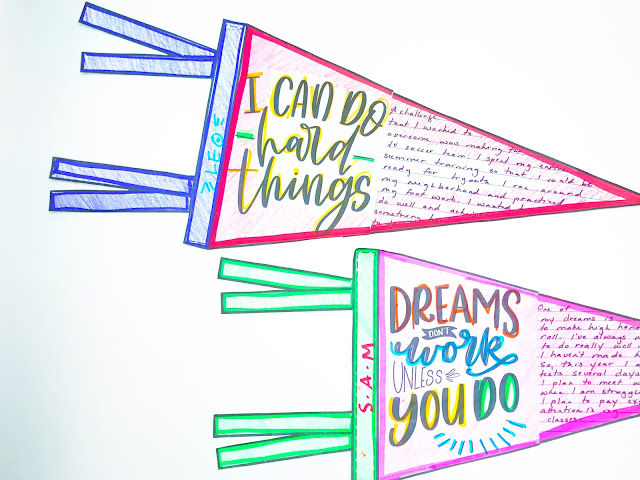Effective Strategies for Managing Challenging Student Behavior: A Proactive Approach
June 9, 2023Managing challenging student behavior is an ongoing concern for teachers. I've had my fair share of difficult students and even classes. Over the years, I found that adopting proactive strategies and maintaining a positive classroom environment, helped me to effectively address and promote positive behavior among my students. Today I'm sharing some strategies to promote positive behavior before, during, and after students misbehave.
 |
| FIND READY-MADE MANAGEMENT RESOURCES HERE. |
One of the best ways to deal with challenging behavior is to try to prevent it. While that might be easier said than done, here are a few proven ways to proactively promote positive behavior in the classroom.
>>> Clear Expectations: Set clear and consistent expectations for behavior in the classroom. Ensure that students understand the rules, consequences, and rewards associated with their actions.
>>> Establish Routines: Create structured routines and procedures that provide a sense of stability and predictability for students. Consistency fosters a positive environment and reduces the likelihood of disruptive behavior.
>>> Individualized Support: Recognize that each student is unique and may require personalized support. Identify their strengths and interests, and provide opportunities for success to encourage positive behavior. Try to gain insight about students from their own personal inventories, insights from parents, and support from former educators.
>>> Positive Reinforcement: Utilize positive reinforcement techniques such as verbal praise, rewards, and recognition to motivate students and reinforce desirable behavior. Celebrate their achievements publicly to boost their self-esteem. Grab free positive notes here.
OK, OK...so you've tried to put all the positive systems in place to promote great behavior, but you're faced with some challenging behavior in the classroom. What do you do in the moment? Well, here are a few strategies that you can give a try...
>>> Remain Calm and Composed: It's essential for teachers to maintain a calm demeanor when addressing challenging behavior. Reacting with anger or frustration may escalate the situation further. Use a calm, quiet voice with students and keep your composure.
>>> Active Listening: Take the time to actively listen to the student's concerns or frustrations. Sometimes, disruptive behavior can stem from underlying issues that need to be addressed. Ask questions and seek clarification to try to understand what the student wants/needs.
>>> Use Proximity and Non-Verbal Cues: Move closer to the student displaying disruptive behavior to subtly signal that their actions are being noticed. Utilize non-verbal cues such as eye contact or hand gestures to redirect their attention.
>>> Provide Clear Consequences: Clearly communicate the consequences of the challenging behavior, ensuring that students understand the link between their actions and the outcome. Consistency in applying consequences is crucial.
Sometimes the most powerful way to encourage positive behavior and thoughtful choices in the future is to connect with students after they exhibit challenging behavior. You can do this with these strategies...
>>> Private Conversation: Initiate a private conversation with the student to discuss the incident and understand their perspective. This approach helps build trust and allows for open communication.
>>> Reflective Questions: Ask the student reflective questions about their behavior, allowing them to contemplate the consequences and alternative choices they could have made. Encourage them to take ownership of their actions.
>>> Restorative Practices: Implement restorative practices, such as mediation or peer-to-peer conversations, to repair relationships and encourage empathy and understanding among students.
>>> Building Positive Relationships: Make an effort to build positive relationships with challenging students by showing interest in their lives, providing mentorship, or involving them in classroom activities. Positive relationships create a sense of belonging and reduce the likelihood of future disruptive behavior. (Here's a fun way to add positivity to the classroom with pennant flags.)
-----------------------------------------------------------------------
Let's face it, managing student behavior can be an ongoing concern for teachers. Every student is different. They each bring their own unique gifts and challenges. I hope these strategies help provide some ways to manage behavior in your classroom.
*************GREAT NEWS**************
If you're looking for more ways to create a positive classroom, be sure to grab the FREE EVERYTHING GUIDE for TEACHERS!










